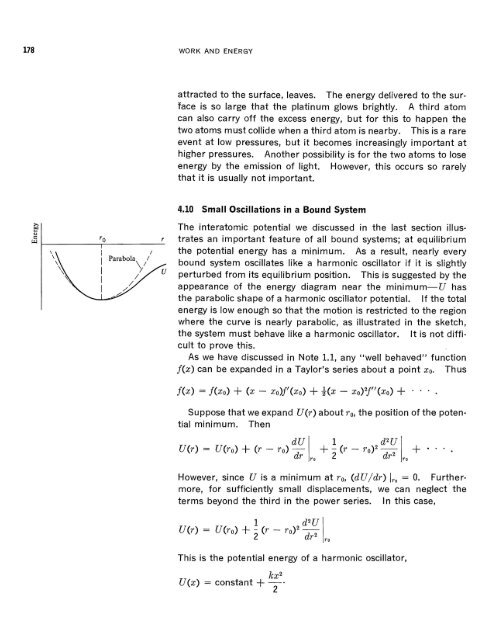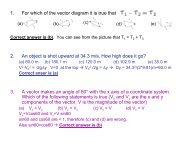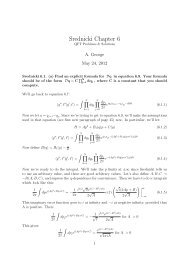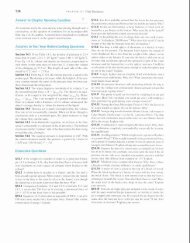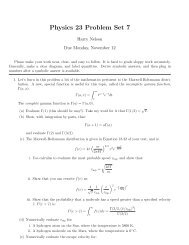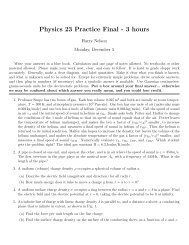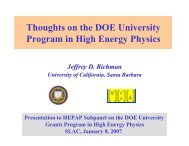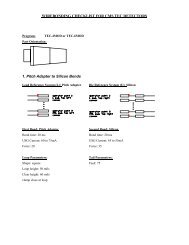Chapter 4 - UCSB HEP
Chapter 4 - UCSB HEP
Chapter 4 - UCSB HEP
You also want an ePaper? Increase the reach of your titles
YUMPU automatically turns print PDFs into web optimized ePapers that Google loves.
WORK AND ENERGY<br />
attracted tothesurface, leaves. Theenergydetivered to the sur-<br />
Tace is so large that the platinum glows brightly. A third atom<br />
can also carry off the excess energy, but for this to happen the<br />
two atoms must collide when a third atom is nearby. This is a rare<br />
event at low pressures, but it becomes increasingly important at<br />
higher pressures. Another possibility is for the two atoms to lose<br />
energy by the emission of light. However, this occurs so rarely<br />
that it is usually not important,<br />
4.10 Small Osdllatio~s in a Bound System<br />
The interatomic potential we discussed in the last section illus-<br />
'0 r trates an important feature of all bound systems; at equilibrium<br />
the potential energy has a minimum. As a result, nearly every<br />
bound system oscillates like a harmonic oscillator if it is slightly<br />
perturbed from its equilibrium position. This is suggested by the<br />
appearance of the energy diagram near the minimum-U has<br />
the parabolic shape of a harmonic oscillator potential. If the total<br />
energy is low enough so that the motion is restricted to the region<br />
where the curve is nearly parabolic, as illustrated in the sketch,<br />
the system must behave like a harmonic oscillator. It is not difficult<br />
to prove this.<br />
As we have discussed in Note 1.1, any "well behaved" function<br />
f(x) can be expanded in a Taylor's series a bout a point xo. Thus<br />
Suppose that we expand U(r)about ro, the position of the potential<br />
minimum. Then<br />
= 0. Furthermore,<br />
for sufficiently small displacements, we can neglect the<br />
terms beyond the third in the power series. In this case,<br />
However, since U is a minimum at TO, (dU/dr) I,<br />
This is the potential energy of a harmonic oscillator,<br />
kx2<br />
U(x) = constant + -. 2


